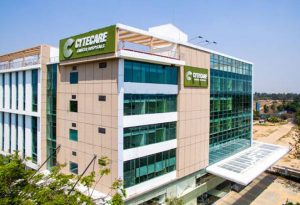Acute Myeloid Leukaemia
Acute myeloid leukaemia, AML, is a form of cancer that develops in the blood and bone marrow. Acute myeloid leukaemia specifically affects the white blood cells (WBCs), causing them to become abnormal in form. The word “acute” in acute myeloid leukaemia means the disease rapidly progresses. It’s called myeloid leukaemia because it affects the group of white blood […] Read More
Top Doctors For Acute Myeloid Leukaemia Treatments
Top Hospitals For Acute Myeloid Leukaemia Treatments
Acute Myeloid Leukaemia
- Blood tests: This is carried out to estimate the white blood cells, red blood cells and platelets, and check for the presence of blast cells. Acute myeloid leukaemia is characterised by a high level of white blood cells, and insufficient red blood cells and platelets.
- Bone marrow biopsy: A sample is collected from the bone marrow, usually from the hipbone, and sent to the laboratory for testing.
- Lumbar puncture (spinal tap): Collection of fluid samples around the spinal cord to check for leukaemia cells.
- Remission induction therapy: The aim of the first phase of acute myeloid leukaemia treatment is to kill off the leukaemia cells in the blood and bone marrow. However, remission induction therapy doesn’t wipe out all of the leukaemia cells, so further treatment is needed to prevent the disease from recurring.
- Consolidation therapy: This is also known as post-remission or maintenance therapy. This phase of acute myeloid leukaemia treatment is aimed at destroying the leftover of the leukaemia cells. It’s considered crucial to reducing the risk of a relapse.
- Chemotherapy: Though used majorly in remission induction therapy, can also be used for consolidation therapy. Chemotherapy uses chemicals to destroy the cancer cells in the body.
- Targeted therapy: Specialised drugs are targeted at specific abnormalities present within the cancer cells. This causes the cancer cells to die. Targeted therapy may either be used alone or in combination with chemotherapy for induction therapy and consolidation therapy.
- Bone marrow transplant: Also known as stem cell transplant, this is used for consolidation therapy. Bone marrow transplant helps to re-establish healthy stem cells through replacement of unhealthy bone marrow with leukaemia-free stem cells that will regenerate healthy bone marrow.
Symptoms
Acute myeloid leukaemia symptoms in the early stages may mimic those of the flu or other common diseases.
Generally, acute myeloid leukaemia symptoms are;
- Fever and headaches.
- Bone pain.
- Lethargy and fatigue.
- Shortness of breath.
- Pale skin.
- Frequent infections.
- Easy bruising.
- Unusual bleeding, like frequent bleeding from the nose and gums.
- Excessive sweating, mostly at night.
- Unexplained weight loss.
- Periods heavier than normal, in females.
- Loss of appetite.
- Petechial; tiny red spots on your skin.
- Swollen liver or spleen.
Causes
Acute myeloid leukaemia causes is due to mutations (that is, changes) in bone marrow cell’s genetic material or DNA. A cell's DNA is the powerhouse, it tells the cell what to do; such as growth rate and set time for death. In acute myeloid leukaemia, the resulting mutations cause the bone marrow cell to continue growing and dividing, and to never die.
When this happens, the blood cell production goes out of control, and the bone marrow starts to produce immature cells that develop into leukaemic white blood cells known as myoblasts. These abnormal cells do not function properly, and may end up building up and crowd out healthy cells.
It's not, however, yet clear what causes the DNA mutations that lead to acute myeloid leukaemia, but certain factors have been identified to increase the risk.
FAQ
How do I prevent acute myeloid leukaemia?
There’s no known definitive means to prevent acute myeloid leukaemia.
However, those that work around hazardous chemicals or radiation should ensure to wear any and all available protective gear to limit exposure.
Also, make it a habit to always see a doctor if there are any symptoms of concern.
What are the risk factors of acute myeloid leukaemia?
Certain factors that may increase the risk of acute myeloid leukaemia are;
- Age: The risk of developing acute myeloid leukaemia increases with age. It has been found to be most common in adults aged 65 years and above.
- Sex: Men are at higher risk to develop acute myeloid leukaemia than women.
- Previous cancer treatment: People who've had to undergo chemotherapy or have previously undergone radiation therapy may be at a greater risk of developing acute myeloid leukaemia.
- Exposure to radiation: Those exposed to very high levels of radiation have an increased risk of developing acute myeloid leukaemia.
- Dangerous chemical exposure: Exposure to certain chemicals, like benzene, have been found to have links to increase risk of acute myeloid leukaemia.
- Smoking: Acute myeloid leukaemia development is linked to cigarette, which contains benzene and some other chemicals known to cause cancer.
- Certain blood disorders: Like myelodysplasia, myelofibrosis, polycythemia vera or thrombocythemia increases the risk of developing acute myeloid leukaemia.
- Certain genetic disorders: Like Down syndrome, are associated with increased risk of acute myeloid leukaemia.
P.S. Many people with acute myeloid leukaemia don’t have known risk factors. Many people with risk factors never develop the cancer.
Are there any coping and support tips for acute myeloid leukaemia?
The following tips may help with coping with acute myeloid leukaemia;
- Learn enough to make decisions about your care.
- Lean on family and friends.
- Take care of yourself, not just the cancer.
What is acute myeloid leukaemia survival rate?
The 5-year acute myeloid leukaemia survival rate for those who are 20 years and above is about 25%. For those below 20 years, the survival rate is 67%.
































































































